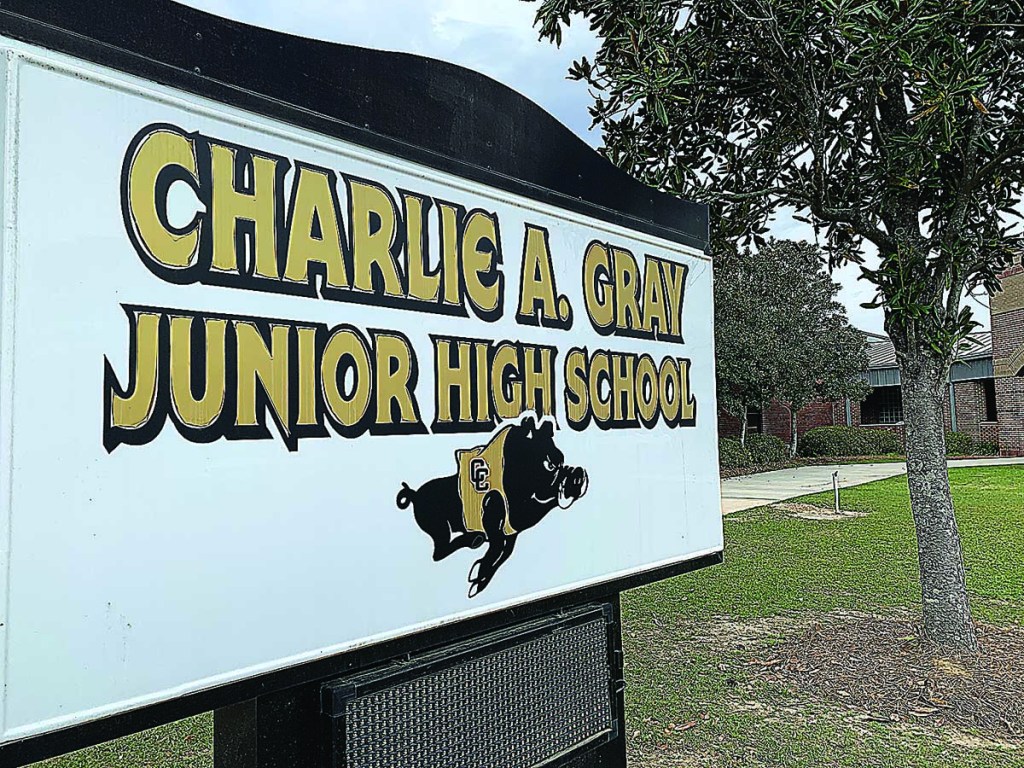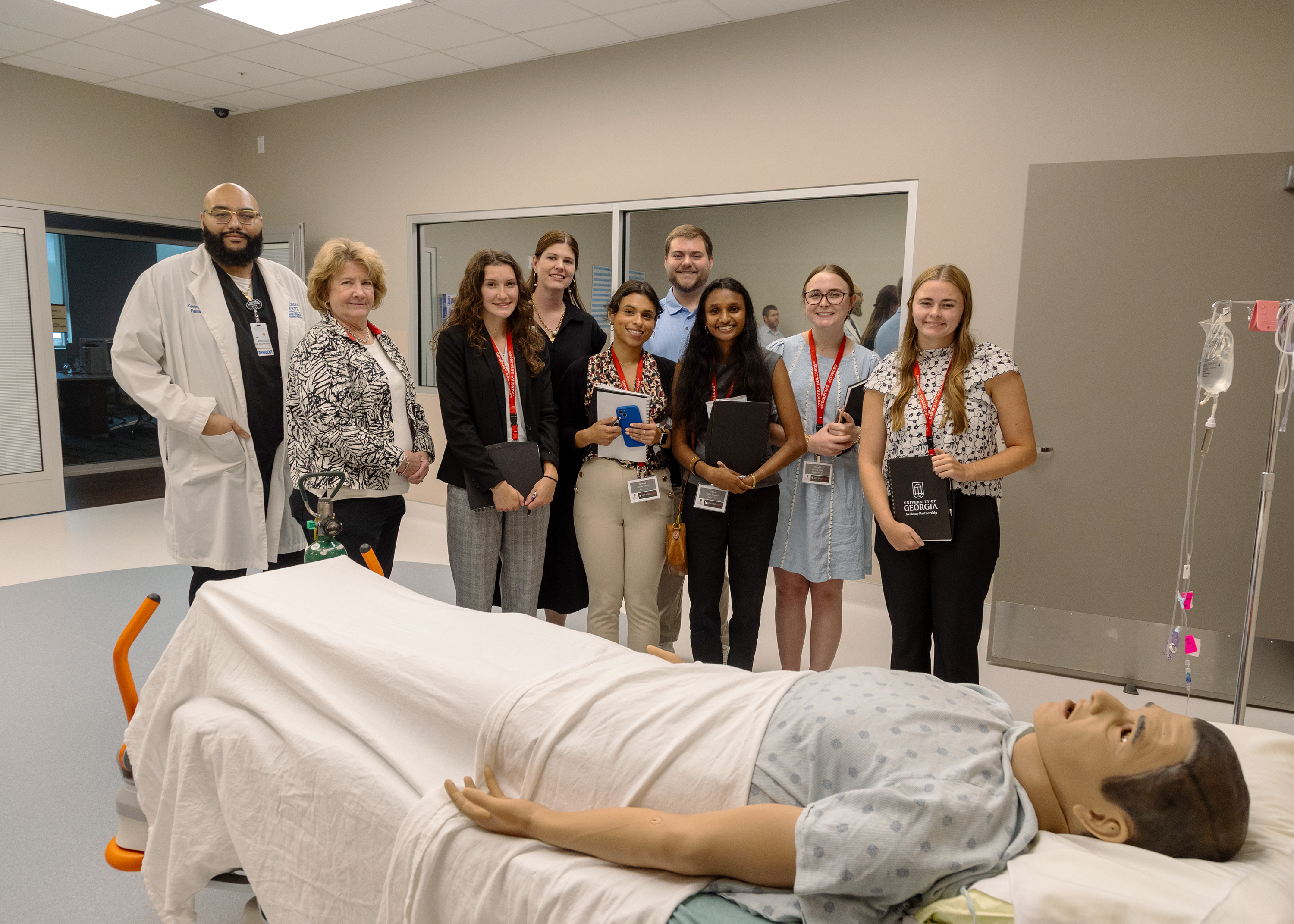VIDEO ADDED: Public defends C.A. Gray at facilities meeting
Published 6:00 pm Tuesday, March 15, 2022

- The Colquitt County Board of Education considered whether to demolish C.A. Gray Junior High and rebuild it on its current site or to build a new junior high elsewhere. But on Monday the school system said a change in state funding guidelines mean neither version of the project would get state money, so neither is going to happen any time soon.
MOULTRIE, Ga. — “No decisions have been made in regards to Charlie A. Gray,” Colquitt County School District Superintendent Ben Wiggins said as the Facilities Planning Informational Meeting began Thursday evening.
Discussions of the possible relocation of C.A. Gray Junior High School have been on the forefront of not only the school district’s mind, but the minds of many in the community.
The idea of relocating the school was first brought up by Altman & Barrett architects in a public meeting Feb. 1. In that meeting, architects presented their assessment of the district’s facilities. Those assessments concluded that C.A. Gray should either be rebuilt on the same site or moved to a new campus located across from the high school on Darbyshire Road. The architects also suggested Norman Park Elementary School be torn down and rebuilt on the existing site and significant renovations be done at Willie J. Williams Middle School.
The announcement of possibly moving C.A. Gray has since been met with backlash from members of the community.
The facilities planning meeting, which was held March 10, was broken up into three parts to allow citizens to voice their opinion regarding C.A. Gray and Norman Park Elementary:
- New C.A. Gray
- Norman Park Elementary
- Agriculture
Agriculture was separated as its own category to address the community’s apprehensions of the proposed new site’s location. The location is currently being used as the Colquitt County High School Agri-science Farm. Discussion of its location dominated the Feb. 28 school board meeting when members of the school’s ag community addressed their grievances to the board.
Alongside Wiggins, Leah Jones, vice president of Altman & Barrett, hosted the event. She presented a shortened version of the Feb. 1 presentation while also answering questions from the community.
Wiggins and Jones first explained that “no decisions have been made in regards to C.A. Gray” and that the proposals from the architect firm were “just conceptualizations based on initial inspections.”
“We would not make any decisions regarding this school or any other facility without the consideration of the members of the community,” Wiggins said to the crowd of community members in the C.A. Gray cafeteria as the meeting got underway. “We are holding this planning meeting tonight to gather the community’s opinions, feedback and to answer any questions that might concern C.A. Gray, Norman Park Elementary or the ag facilities.”
Wiggins also explained that the state has guidelines and practices set in place before any decisions are to be made. This includes state approval for any additions to existing facilities or the purchase of land or use of land for a new school.
“Site approval should occur before a new site or additional acreage is purchased and must occur before a new facility or an addition to an existing facility is constructed on the site,” Wiggins read from the Georgia Department of Education Guideline for Educational Facility Site Selection, which was shown in a Powerpoint during the presentation.
Jones explained that the recommendation to move C.A. Gray is in coordination with the state’s middle school facilities acreage requirements. The state requires “12 acres plus one acre for each 100 children,” Jones said.
“C. A. Gray currently has just over 1,300 students,” Jones explained. “To reach that state requirement of 12 acres plus one for every 100 means there is a 25 acre requirement.”
C. A. Gray’s current site is 16 acres surrounded by residential homes.
“This does greatly hinder the expansion potential of the school at its current site,” Jones said.
Altman & Barrett proposed two courses of action in regards to C. A. Gray: move the school or expand on the current site within its current acreage.
If the board chooses to keep the school where it is, work would take place in three phases:
Phase one
- Move the students into modular units.
- Set up construction perimeter.
- Find alternate location for construction laydown.
- Students lose gym and media center during duration of construction.
Phase two
- Demolish existing school in new building footprint.
- Create new school.
- Create new parking, bus drop off and parent drop off.
Phase three
- Remove modular classrooms.
- Create hard connection back to existing building.
- Finish out all landscaping.
- Build athletic field and final grading.
Jones and Wiggins provided a pros and cons list for both keeping the school at the site where it is and moving it to a new site.
“Obviously this is a historic community school but we see there many things that would be sacrificed… First and foremost we see the site does not meet GDOE standards for acreage. We would require a waiver and there is no guarantee we would be granted one,” Jones said.
Other cons listed for keeping the site at its current location include no room for growth or long term planning, the open building plan being a safety concern, limited to no water retention area available and the increased cost compared to moving the site.
When considering the new site Altman & Barrett only had one con: “removes school from neighborhood. No longer a ‘community’ school,” according to the presentation that was provided to The Observer by the school district and will be made available to the public alongside a recording of the entire presentation on the district’s website and shared on their social media platforms.
Pros of moving to a site near Colquitt County High School include:
- Creating an opportunity for the school to have its own athletic fields.
- Allows for cross curriculum instruction with CTAE programs at high school.
- Provides room for growth or long term planning.
Jones also suggested that two buildings currently on the C.A. Gray site could be used for other purposes such as a community center.
In regards to changes to Norman Park Elementary School it was reviewed to be “replacement candidate” but due to the surplus of “system wide elementary classrooms prevents receiving state funding.” If the district was able to acquire state funding it would be able to rebuild the school on its existing site.
Many of those in attendance asked questions regarding the possibility of moving C.A. Gray, which included topics such as the possibility of finding a different space to place the school, concerns of bussing, the cost of modular units compared to the costs of building a new school, how to address the current safety concerns, management of the current C.A. Gray site should the school move and much more.
Wiggins called the evening an “overwhelming success” in an interview following the event.
“The whole purpose was to hear from the stakeholders and gauge their thoughts… We will continue to gather feedback from everyone in the community and no decision will be made by the board without the complete understanding of the community’s feelings,” Wiggins said.
Wiggins did say that the earliest an Educational Special Purpose Local Option Sales Tax could be voted on is November of this year but “more than likely” wouldn’t see a vote until May of 2023.
The district is still collecting community feedback via their online survey. As of press time Tuesday, the video of the presentation had not been published by the district but should be available by the end of the day Tuesday, according to chief communications officer Angela Hobby.





